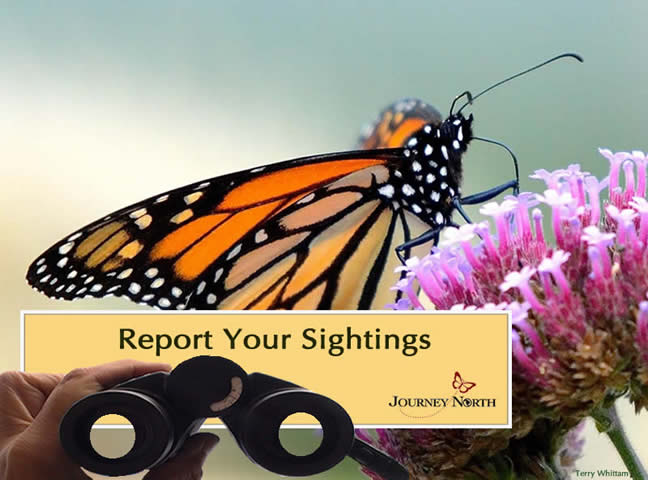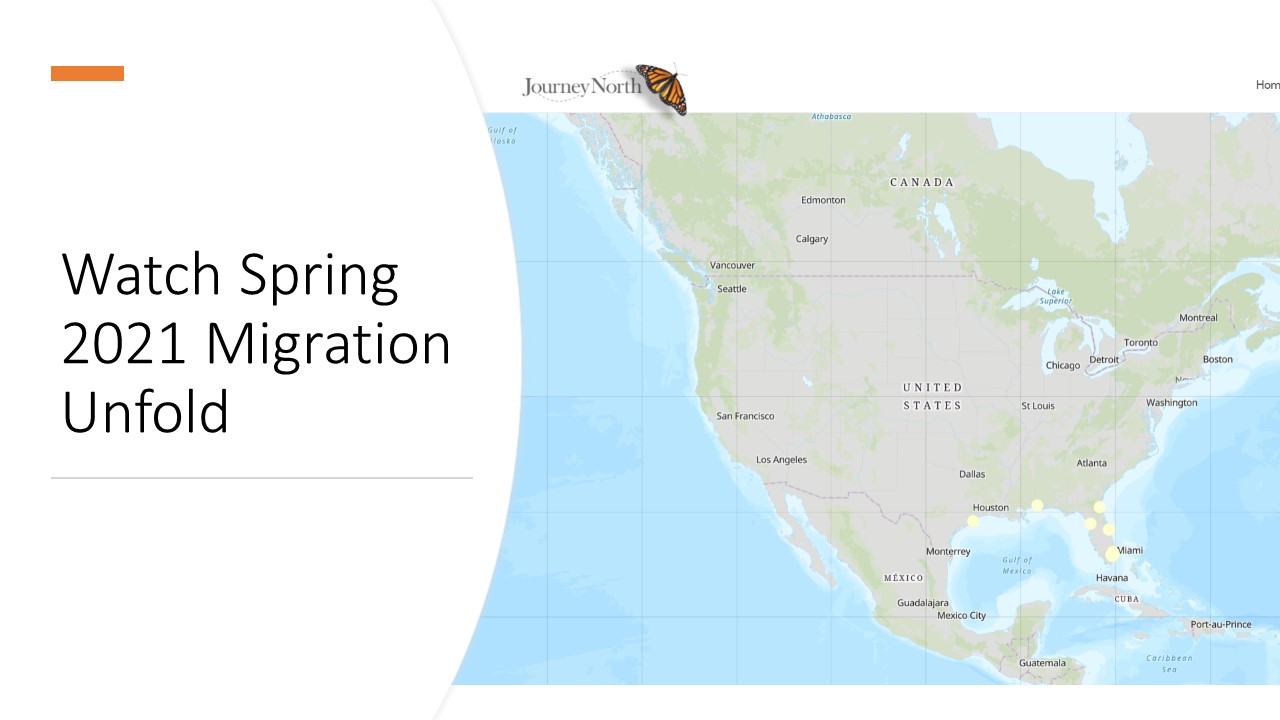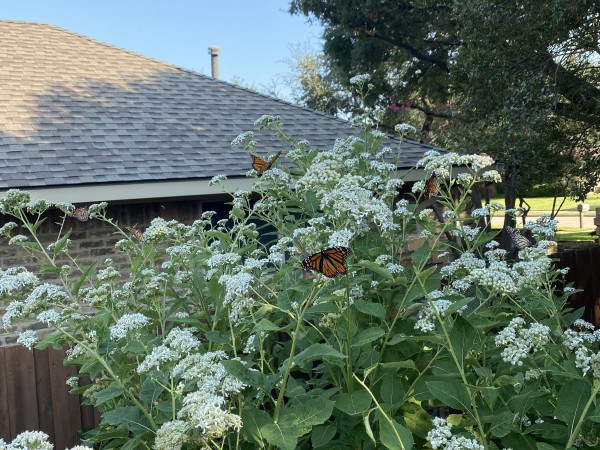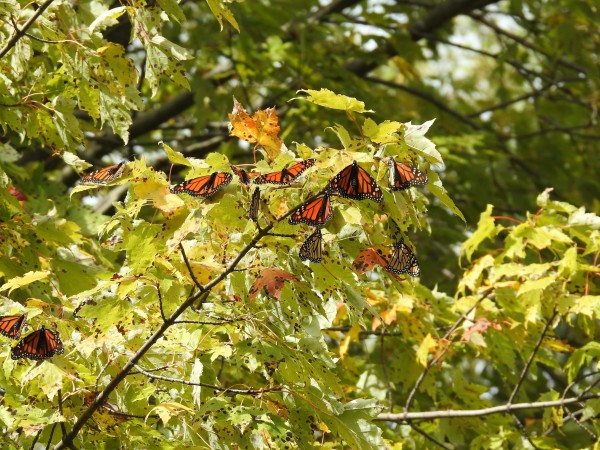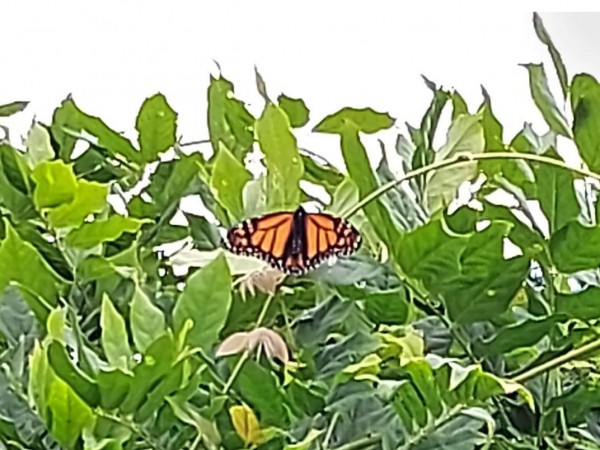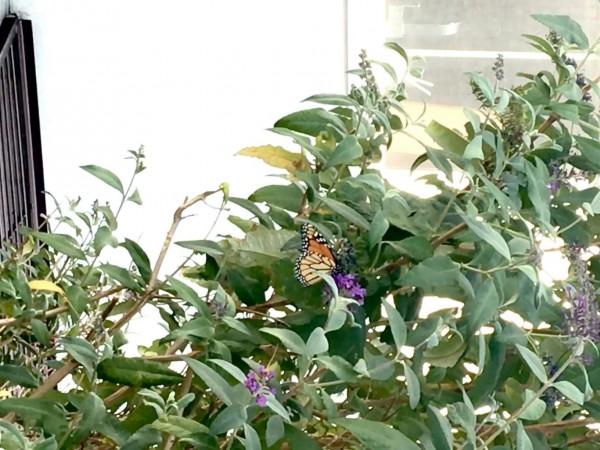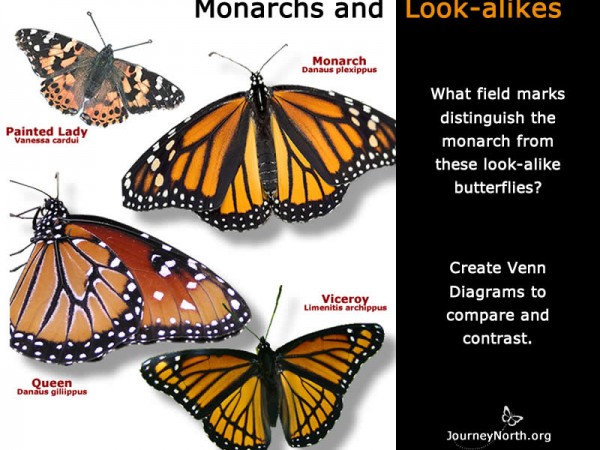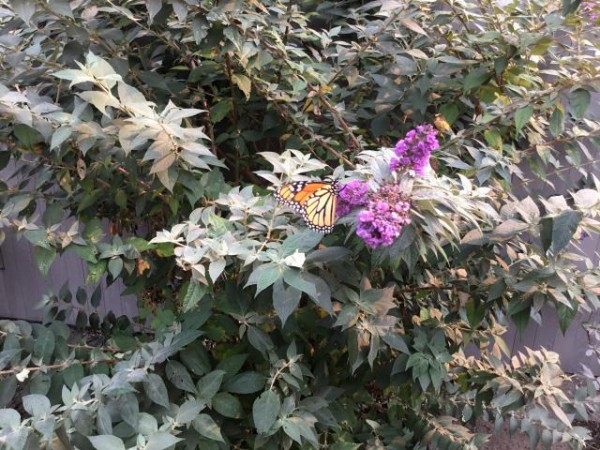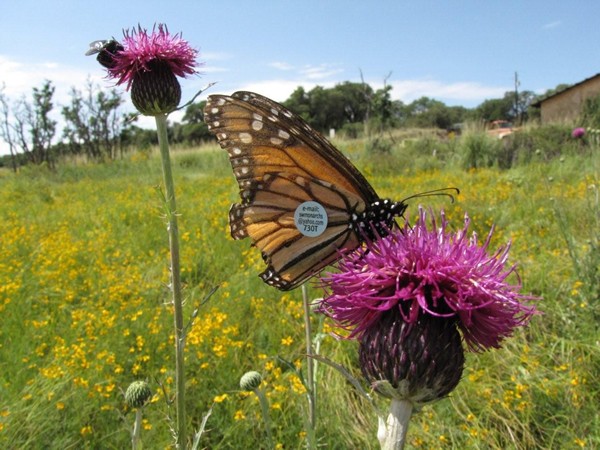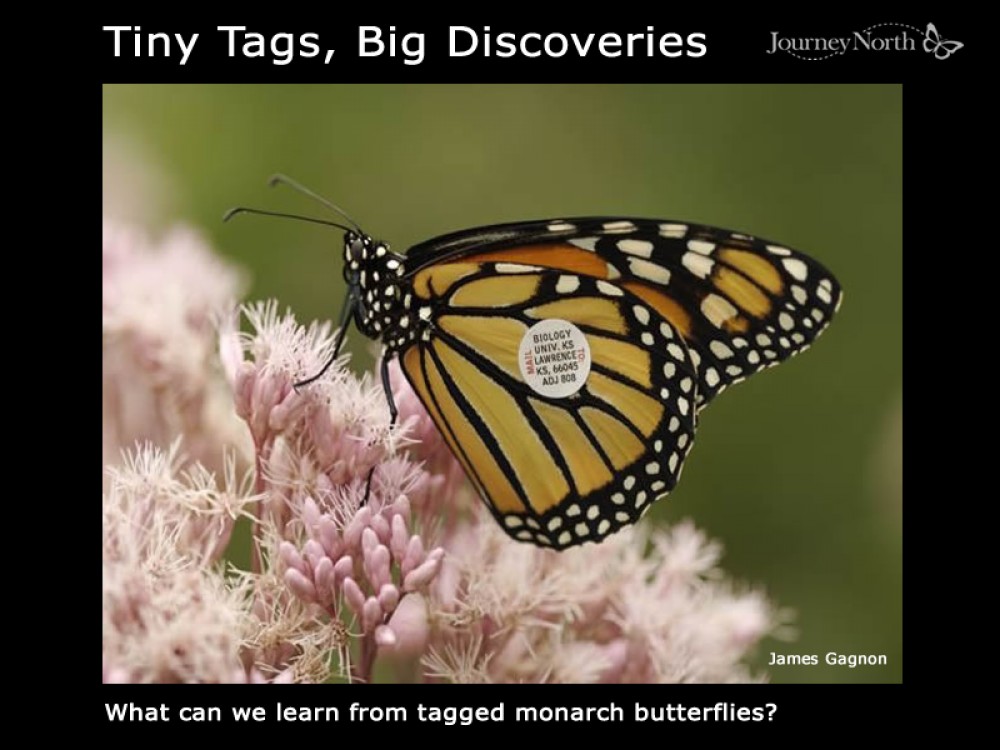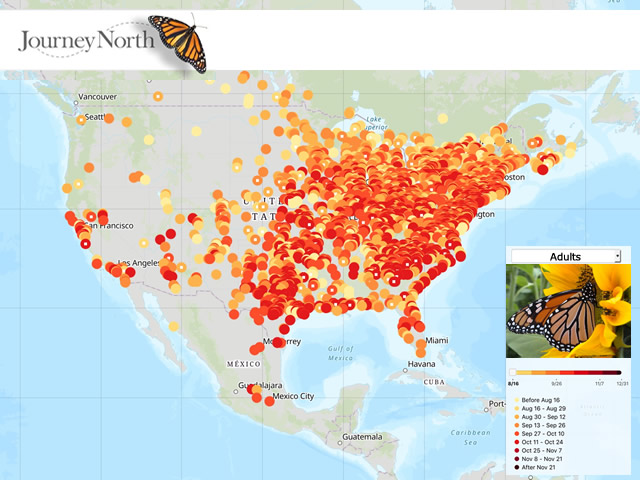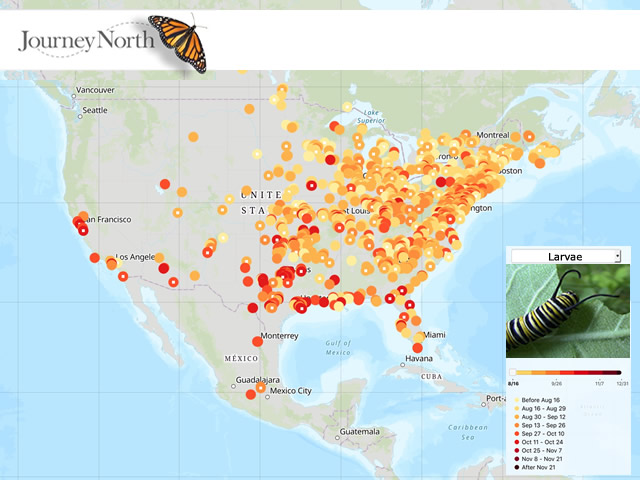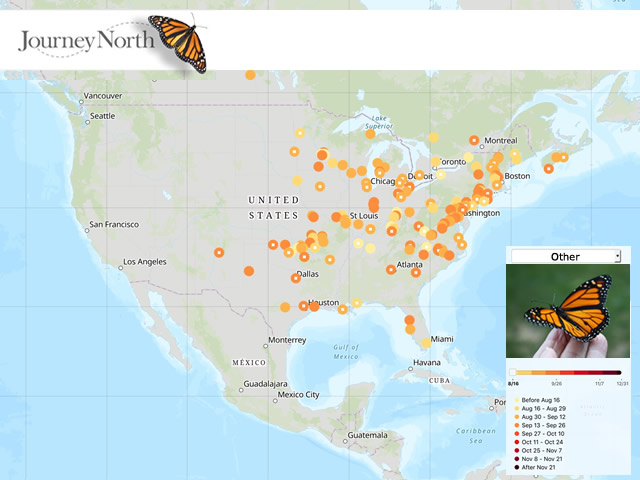Flowing Through Texas Towards Mexico
Texas has become a hotspot of migration activity and more monarchs flowing towards Mexico are being reported. Out west, temperatures are still warm and favorable for migration, but cooler weather will soon move in. Keep reporting!
Eastern Monarch Population
Central Flyway: Texas a Hotspot
Since last week's news update on September 30, Texas has become a hotspot for reporting. Peak activity and roosts were widely sighted, and monarch numbers grew throughout the week. Is Texas the migration frontline along the central flyway?
Krista in Sterling City, TX: "Large migration of monarchs appeared Friday, Oct 2nd and left by 7am Sunday Oct 4th. Peak sightings Oct 3rd. I am uncertain of number... 2000 is a guess for my own back yard. There were similar sightings all around our area." (10/02/2020)
Jan in Plano, TX: "Today was a busy monarch day in our backyard. Many flying over and 6 or more all day on the frost weed." (10/06/2020)
More monarchs (770!) have been sighted heading into Mexico via Amistad National Recreation Area.
Elena in Del Rio, TX: "Sighted the migration during a standard flyby survey. 10:00am to 12:00pm. Observed 770 in two hours. Coming off the water, heading south towards Mexico border. Flying several meters (up to 12 m) off the ground, not stopping, just powering through." (10/01/2020).
Morgan in Del Rio, TX: "Over 300 roosting near the International Boundary and Water Commission here in Del Rio, TX” (10/05/20)
Activity Along Eastern Flyway
Jack in Millville, NJ: "I work for the Monarch Monitoring Project in Cape May and tag up at East Point on the weekends and can tell you that it was an interesting [monarch] movement, as it was very constant (as I said an average of 1.4 monarchs per minute for an hour) and in good numbers." (09/27/2020)
Russ in Canton, NC: "Same spot as previously reported, milepost 418 on B Rdg Prkwy--annual flyway for migration south . . . Almost ALWAYS flying as not much flora to land and energize up on. Seen Monarchs on 3 outta 4 trips there!" (10/03/2020)
Late Activity Still Up North
Matthew in Irving, NY: " Estimated migration of 200 adult monarch butterflies in Evangola State Park” (10/2/20).
Sandy in Halifax, NS: "The monarch in this photo hatched today and another was spotted about 1/2 km away in a playground. Hope they make it." (10/02/2020)
Western Monarch Population
Hurrying on their way!
Sightings this week were scattered across the lower Western states as monarchs continue their determined flight moving through the area. Longer nights and gradually cooling days are encouraging monarchs to hurry on their way.
Angela in South Jordan, UT: "Adult monarch seen feeding on butterfly bush in South Jordan [Utah]." (10/01/1010)
Amanda in Vallejo, CA: "First Monarch I've seen at my house since we moved here and planted our pollinator garden over two years ago." (10/03/2020)
Western monarchs migrating to the California coast have a shorter flight than those migrating to Mexico. But just like we need to refuel our vehicles on a long road trip, monarchs need to refuel their energy reserves as well. Nectar from flowers is key to support both their long flight and to help monarchs survive the upcoming long winter days when it may be too cold to feed.
Read more of Gail Morris' Western Monarch Fall Report #6...
Watch for Monarch “Look–alikes” and Keep Reporting
Other butterfly species such as American snout, viceroy, queen and painted lady can resemble monarchs from a distance. Identification isn't always easy – especially when butterflies are flying – so be sure to review what distinguishes monarchs from look–alikes. Be careful – American snouts have been on the move in large numbers in Texas!
If you’re still observing monarch activity, keep reporting! Thanks for all you do on behalf of monarch tracking.
Fall Monarch Migration 2020
Please report all monarchs you see: Adults, Eggs & Larvae, Overnight Roosts, Peak Migration Events


